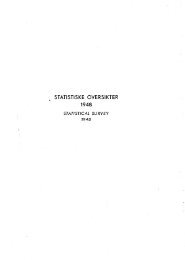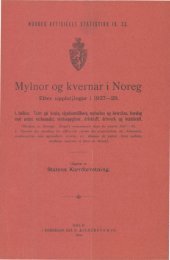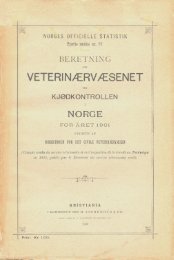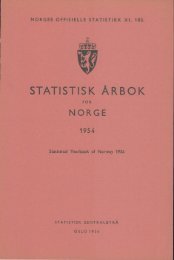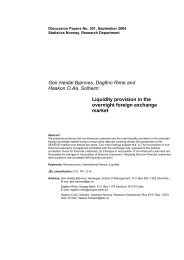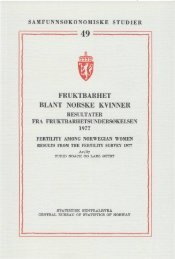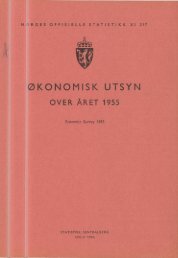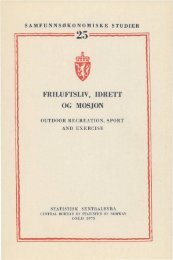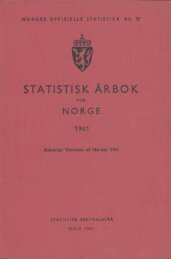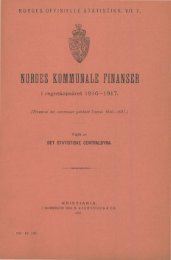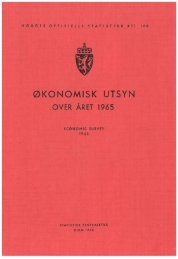XII 81 1960 - Statistisk sentralbyrå
XII 81 1960 - Statistisk sentralbyrå
XII 81 1960 - Statistisk sentralbyrå
You also want an ePaper? Increase the reach of your titles
YUMPU automatically turns print PDFs into web optimized ePapers that Google loves.
English summary<br />
Since 1927 the Central Bureau of Statistics has collected information for<br />
each year on quantity and value of commodities produced and consumption of<br />
raw materials and fuel in mining, quarrying and manufacturing industries. In<br />
addition data are collected on employment, wages and salaries, hours worked by<br />
wage earners, value of fixed capital and stocks. For <strong>1960</strong> information has not<br />
been collected on the insurable value of buildings, plant and machinery, capacity<br />
of power equipment and sex of wage earners (the latter also relating to wages<br />
paid and hours worked).<br />
The statutory basis for the collection is the Statistics Act of April 25, 1905.<br />
For most industry groups the statistics relate to establishments with average<br />
employment of 6 or more. For a few groups the minimum average employment<br />
used is 3, and for coal- and metal mining, manufacture of dairy products (except<br />
ice-cream) and gas supply all establishments are covered. In addition information<br />
on the main characteristics is obtained from a sample of small establishments in<br />
all groups.<br />
As for previous years information is not collected for Publishing. From <strong>1960</strong>,<br />
however, the subgroup Other processing of fish has been included.<br />
The Norwegian Standard Industrial Classification conforms very closely with<br />
the International Standard Industrial Classificaiton (ISIC). The cases where the<br />
Norwegian Standard differs from the ISIC have been marked with an asterisk(*)<br />
in the tables.<br />
The value of gross output is given at market prices, i.e. including indirect<br />
taxes and excluding subsidies. The same principle applies to raw materiels, fuel,<br />
etc. However, information is also collected on indirect taxes and subsidies for these<br />
items. Stocks are reported at market prices at the end of the year.




